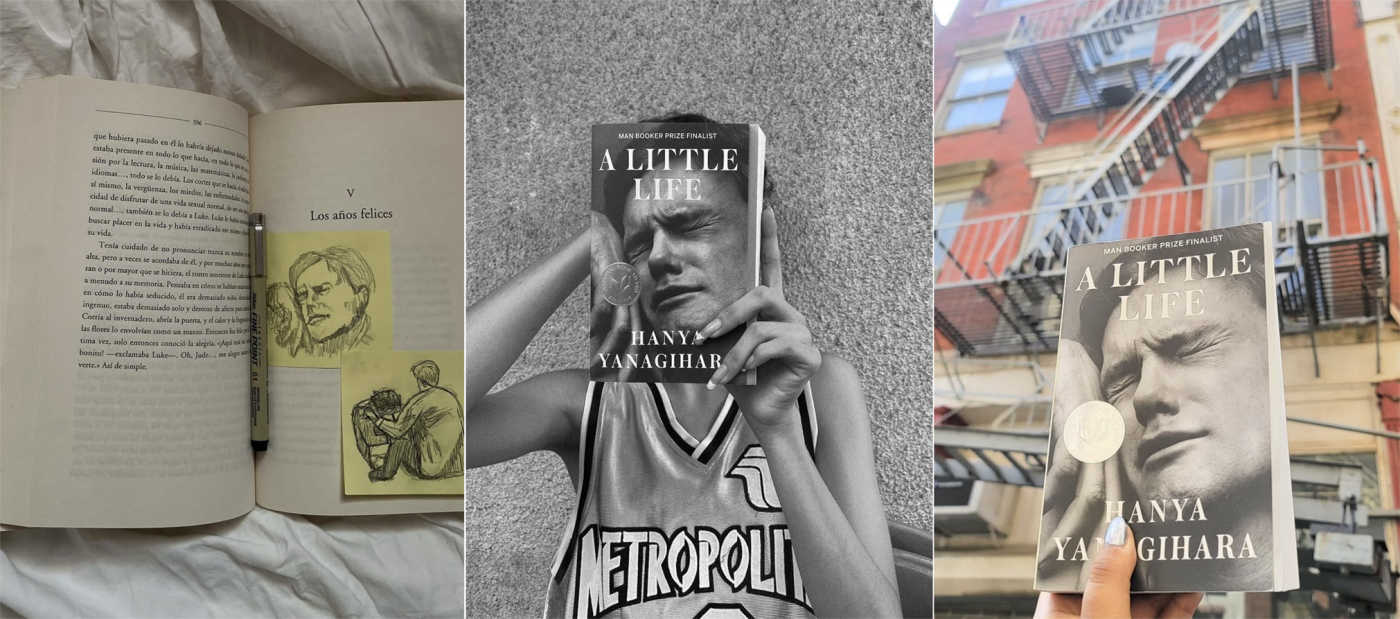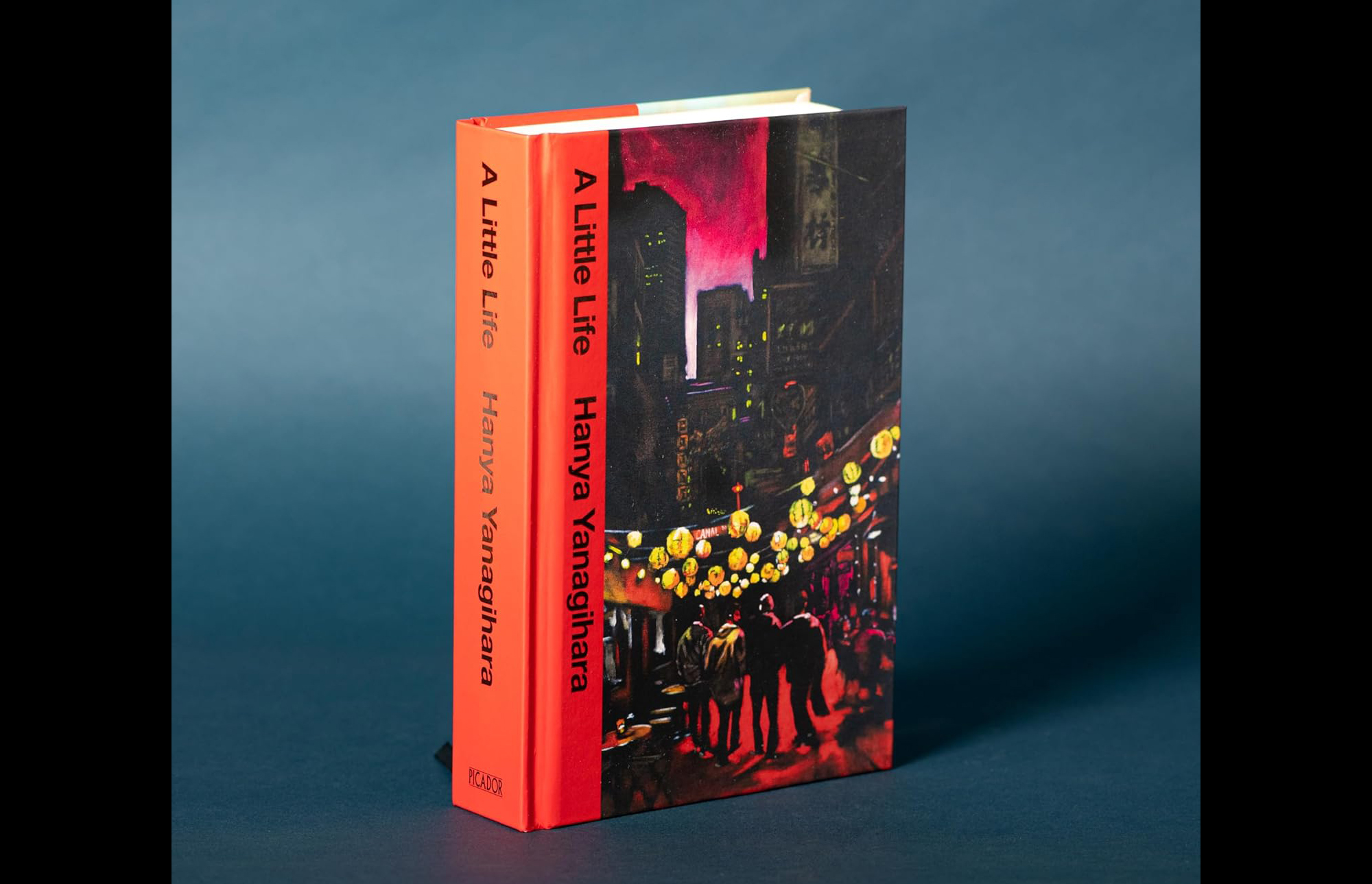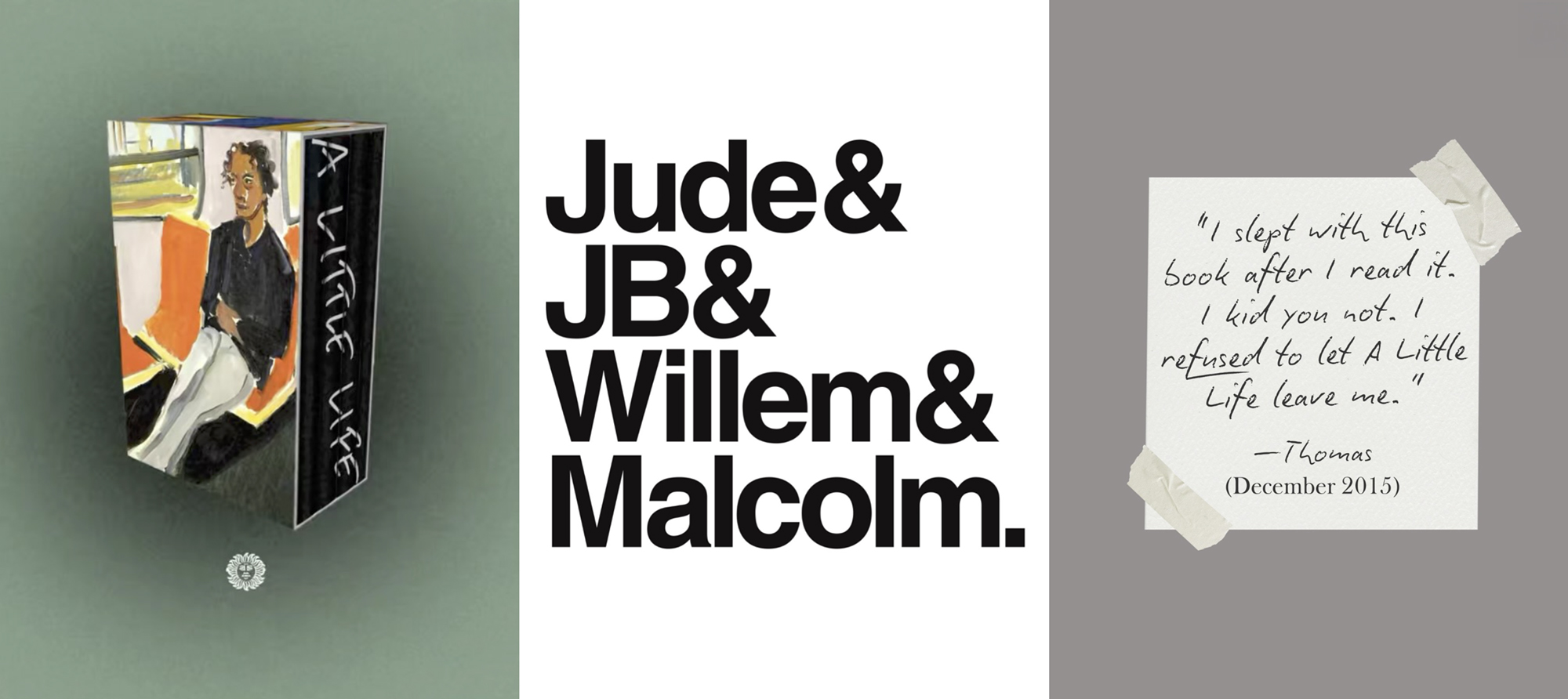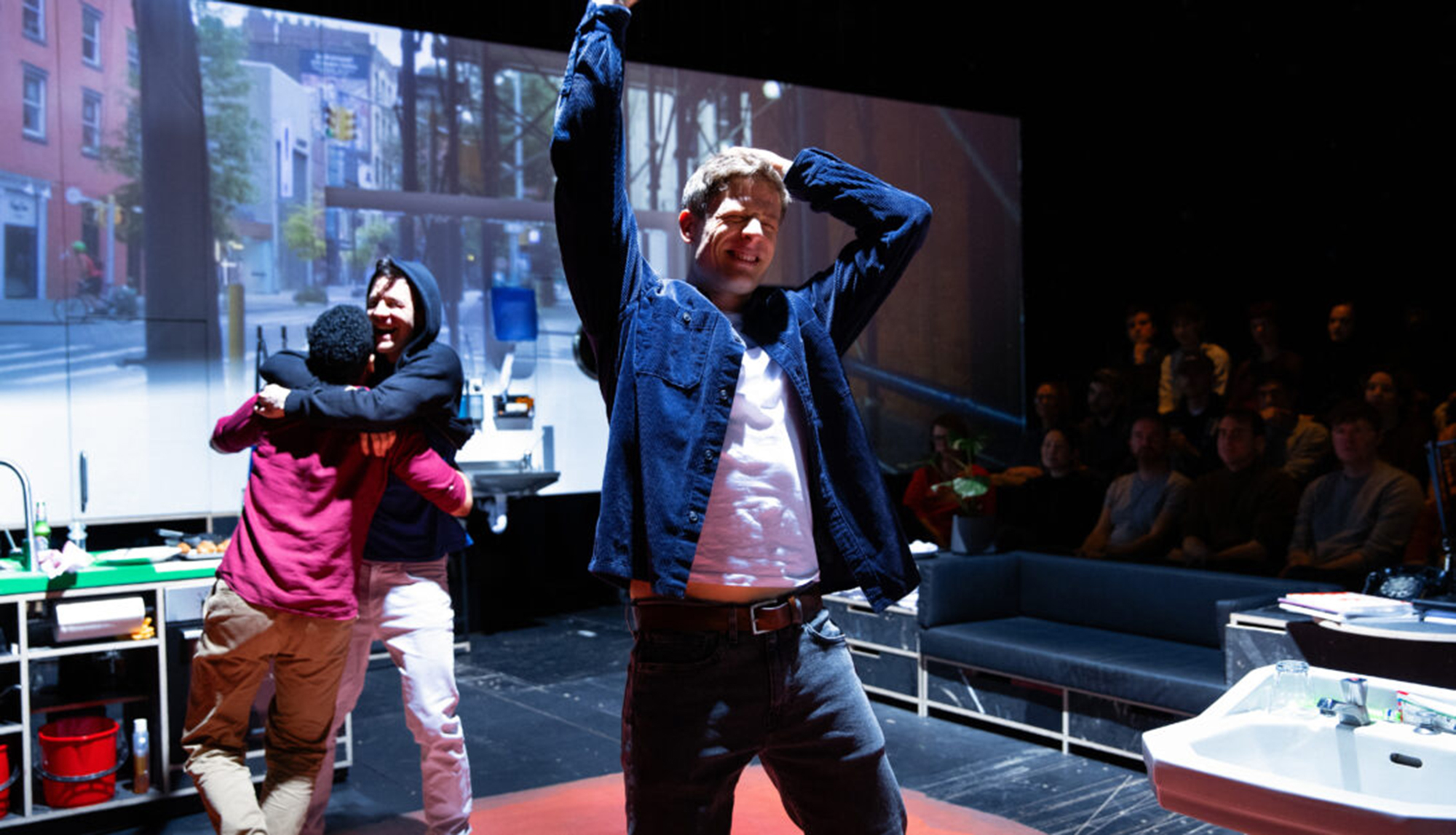
Ten year sentences
Hanya Yanagihara’s 736-page opus A Little Life has been republished in a 10th anniversary hardback collector’s edition. Mark C. O’Flaherty hate-reads it for the first time. [NB contains wilful spoilers]

Hanya Yanagihara’s 736-page opus A Little Life has been republished in a 10th anniversary hardback collector’s edition. Mark C. O’Flaherty hate-reads it for the first time. [NB contains wilful spoilers]

I had been warned off A Little Life for years, but my friends’ loathing of it just made it infinitely more appealing. Like being shouted at by a waiter at Wong Kei before having mediocre cash-only duck fried rice, it seemed like something I needed to experience to be part of the lore. For every person who had rolled their eyes at the mere mention of the book’s title, I had read dozens of opinions online from people who found it to be their road to Damascus. “Maybe the most beautiful, profoundly moving novel I’ve ever read,” wrote Jeff Chu in Vox. For some, it has become part of their identity. When I found a copy of it abandoned on a wall on my street recently it felt like fate. The experience did not disappoint. With the book’s tenth anniversary around the corner I can now – having read the thing – hate it with authority.
I lost count of how many sharks were jumped in the plot, but there always seemed to be a bigger one swimming into the following chapter
I’d love nothing more than a mash up of Dennis Cooper at his most subversive and Sex and the City, but this isn’t it, despite any intention. The story is simple, with the scent of Ryan Murphy around it: Four young men come to New York to make it big – an actor, architect, and artist. Then there’s Jude St. Francis, “a disabled genius with a mysterious past”. Things meander along in a light and soapy fashion and then – with the kind of abrupt mood change that comes after doing keys in a nightclub toilet while tramping through puddles of piss – we drill down into Jude’s mysterious past. He was abused as a child in care, abducted, then abused some more. He escaped, only to be abused a lot more by his saviour. He acquires a boyfriend who batters him and then throws him down a fire escape. Then, everything gets really bad. While all of this is going on, Jude is self-harming with a razor. At one point he has his legs amputated and then cuts at the stumps. Subtle, this tome is not. But then you know… the lead character is called Jude, the original lost cause.

The 10th anniversary hardback collector’s edition
“By the time you finish reading A Little Life,” writes Andrea Long Chu in her brilliant appraisal of it in New York Magazine, “you will have spent a whole book waiting for a man to kill himself.” It is so relentless that it becomes Warholian in its banality. While reading it in bed over the course of a week I found myself laughing out loud and repeatedly interrupting my husband’s sacred bathtime to tell him about some new implausible atrocity. “This is… NUTS!” When novelist and Frasier screenwriter Joe Keenan was interviewed by author and playwright Mike Ross for Civilian, Keenan laughed out loud when they discussed their opinions on A Little Life: “There aren’t as many paedophiles in history as this priest found to line up to fuck a twelve year-old boy.” It’s one of the biggest problems in a problematic book. At one point I found myself doing the numbers on how many men abuse the pre-teen Jude. I couldn’t quite work it out, but it really did take a village and then some.

Picture above and top: Instagram
The writing in A Little Life may not be very good, but it’s not without skill. To execute torture porn well, you have to pace yourself and the reader, and Yanagihara certainly executes. You can see the extreme violence coming a mile off, as if Bernard Herrmann just arrived on the orchestra pit podium and unpacked his conductor’s baton. Various significant details of sexual assault are teased and then dropped in a few pages later. It’s distasteful, but also peculiarly without any engagement apart from the repeated feeling that you do want Jude to kill himself. I lost count of how many sharks were jumped in the plot, but there always seemed to be a bigger one swimming into the following chapter.
A Little Life is hilariously bad but also deeply weird. The characters meander through 9/11 without mention of it, which may be feasible given how self-absorbed they are. Despite this being gay New York and covering several decades, AIDS doesn’t happen either. Jude has every medical issue under the sun as a result of repeated rapes but isn’t HIV+. Lucky Jude. And this is definitely gay rather than queer New York. The characters come across as solipsistic siblings to The Boys in the Band, the 1960s play with its collection of priviliged white homosexuals bitching about how awful things are for them (wait twenty years ducks, then you’ll have something to worry about). Mostly Yanagihara’s gays are sexless and unconvincing.

James Norton in A Little Life (2023)
The copy of the book I picked up on the street had a sticker on its cover from the Savoy Theatre. Whoever read it before me had been to see the stage adaptation in the West End in 2023 and issued with the adhesive circle on the way in to cover the lens on their phone to prevent taking photos of a naked James Norton in the lead role of Jude. They had kept the sticker as a souvenir. This stage adaptation is worth pondering as part of the book’s journey. It was directed by Ivo van Hove, a man who seems to detest theatre so much that he has devoted his life to directing interminable stage adaptations of beloved films and classic texts purely to troll audiences. I feel an infinite sadness that David Bowie’s last days were spent working with van Hove on Lazarus, just as I felt an infinite boredom watching the director’s version of All About Eve. I went to his West Side Story in 2019 pretty much just to hate-watch it. I had given up by 2023, but the reviews of A Little Life suggest it was on brand. All 220 minutes of it. In a way, it’s the perfect text for him. Theatre as endurance test.
Hujar captured the expression on his subject’s face just as he was shooting his load
The most commonly read edition of A Little Life features a portrait of a man’s face apparently grimacing. It’s a photograph by Peter Hujar whose work, and relationship with David Wojnarowicz in the 1980s, fascinates me. I have a print of his 1973 photograph of Candy Darling on her Deathbed on the wall at home. Hujar was a genius and famously meticulous about every aspect of the production of his work. The photograph on the book’s cover is now, by nature of context, the best known of his images, but it isn’t what it seems. Its title is Orgasmic Man – Hujar captured the expression on his subject’s face just as he was shooting his load. Yanagihara was fixated on having it for her cover, telling the Wall Street Journal: “I love the intimacy, the emotion, what looks like anguish. There’s something so visceral about it”. Indeed there is. I love it for the same reasons she does. Which is why I wish she’d left it well alone and used something from a stock library.
Once I’d finished A Little Life I thought about returning my copy of the book back to the wall I had found it on, with a warning Sharpied across the cover: “Yes, he dies in the end.” Instead it went straight into the recycling bin, to save at least one other person from misplaced curiosity. C